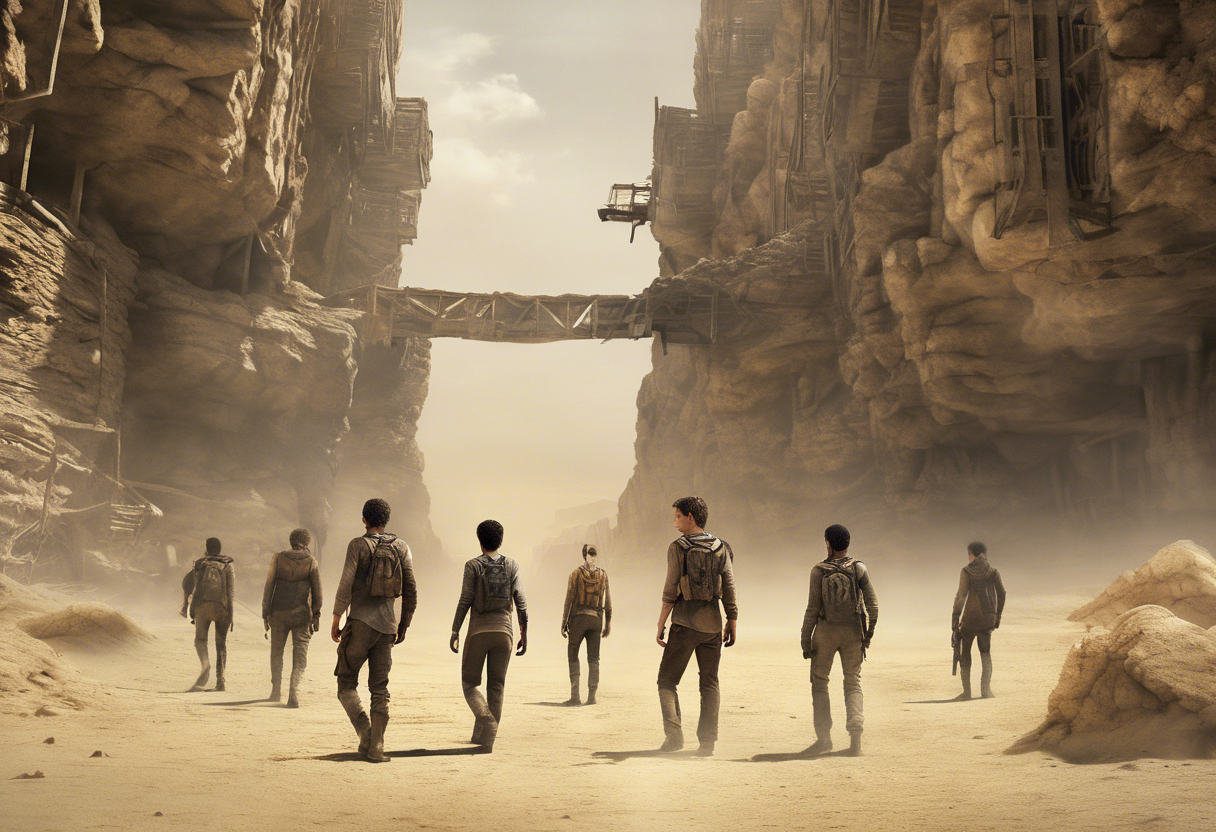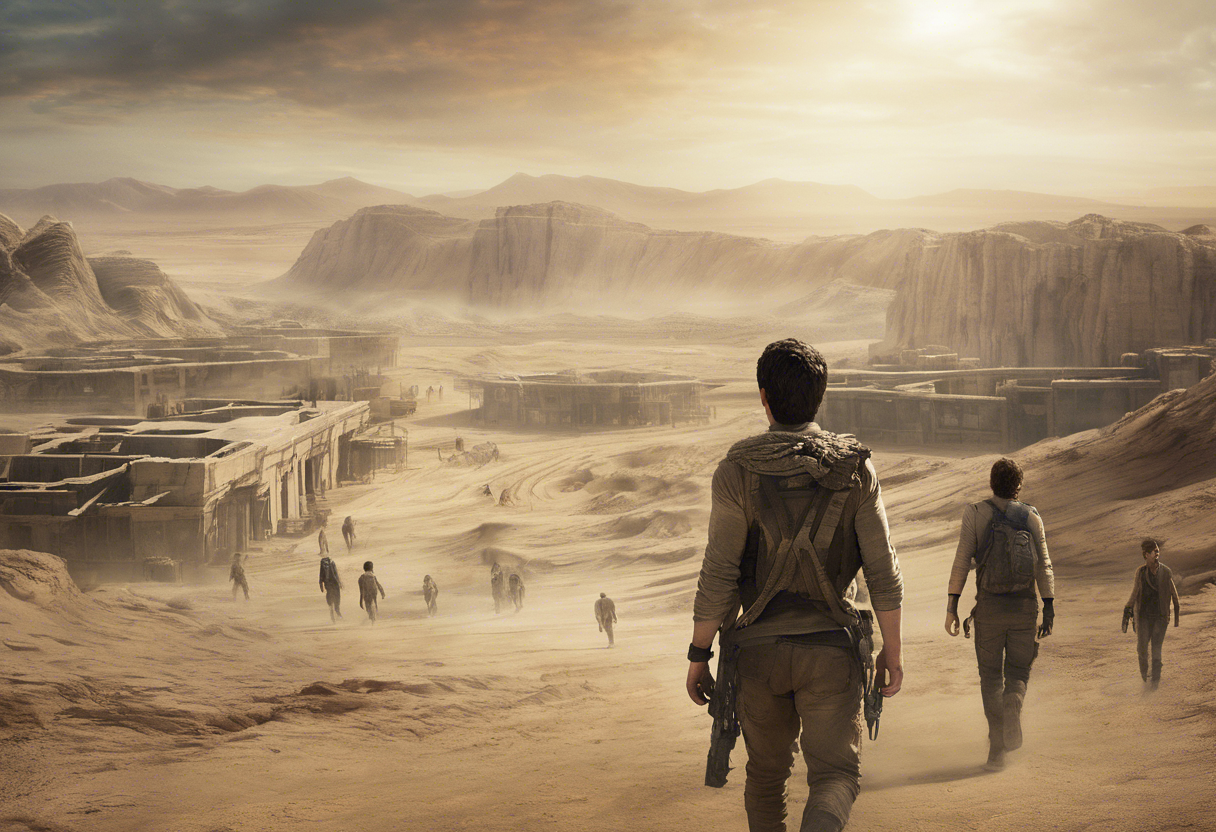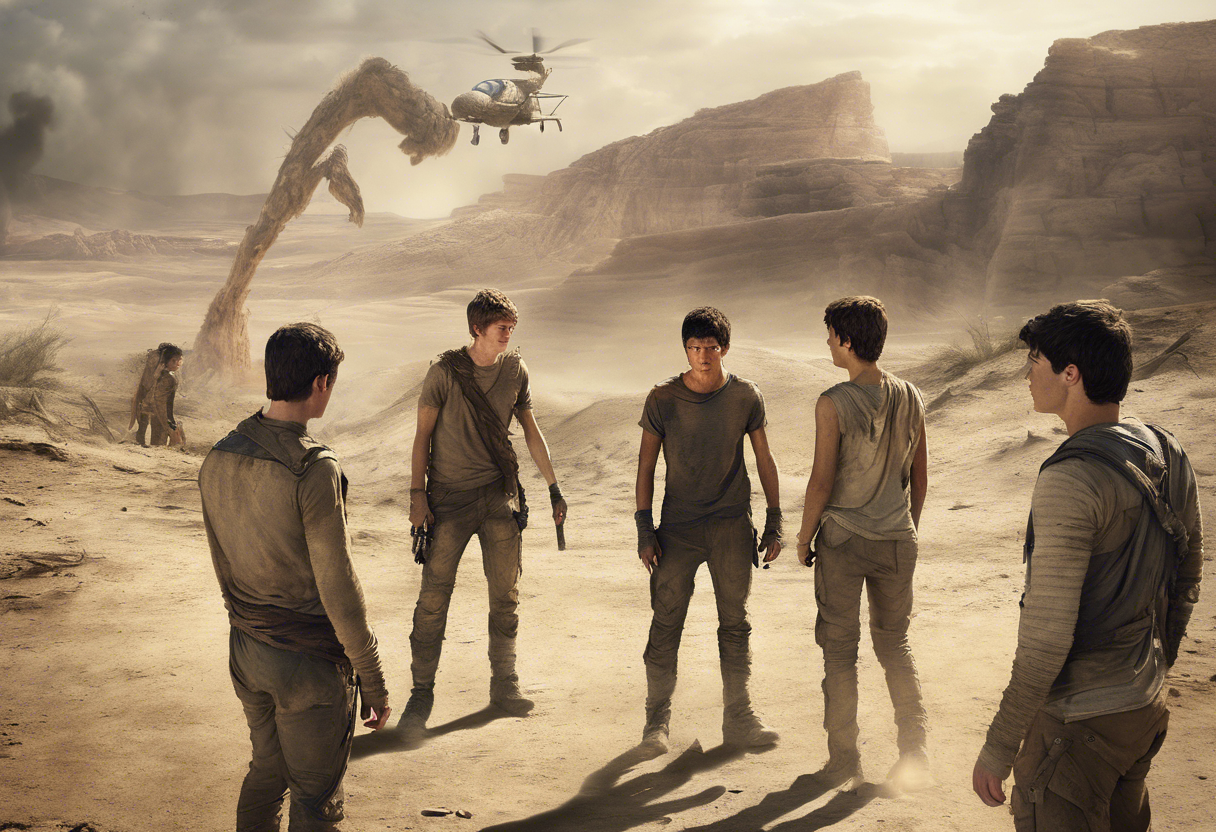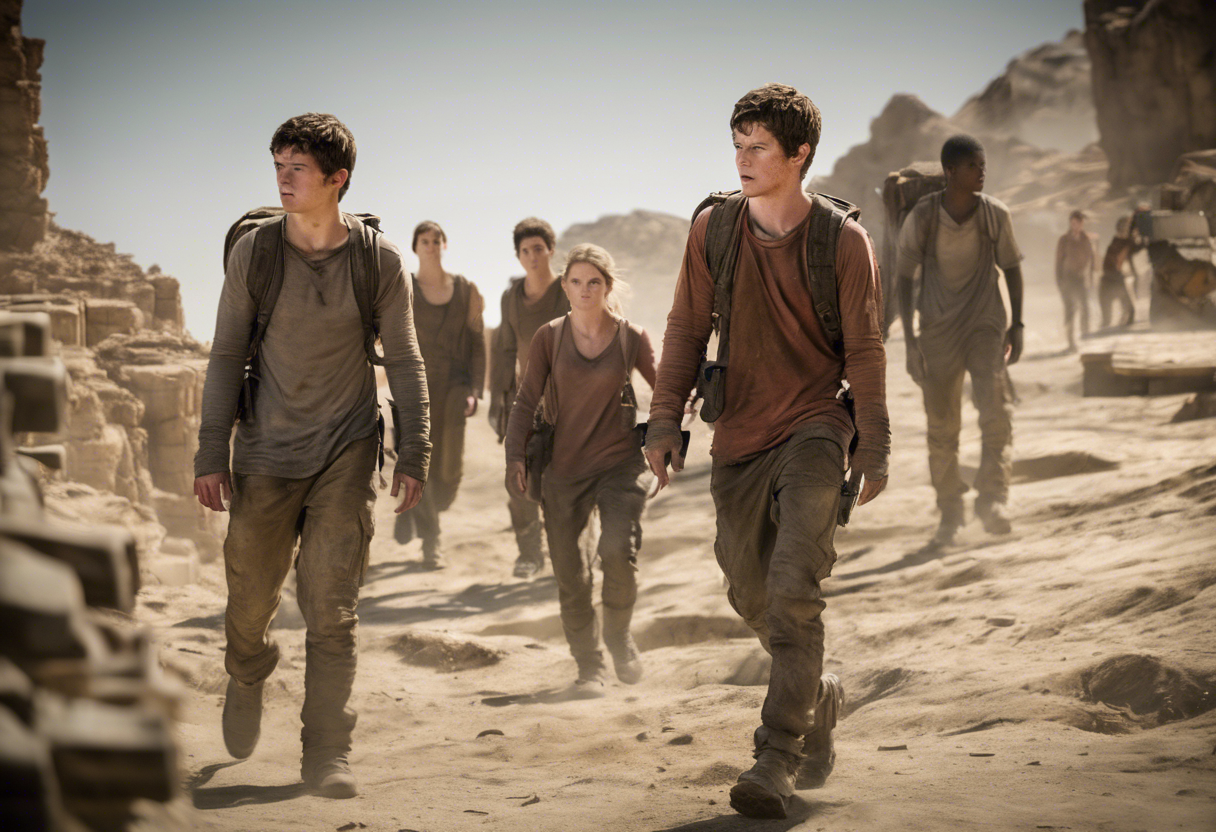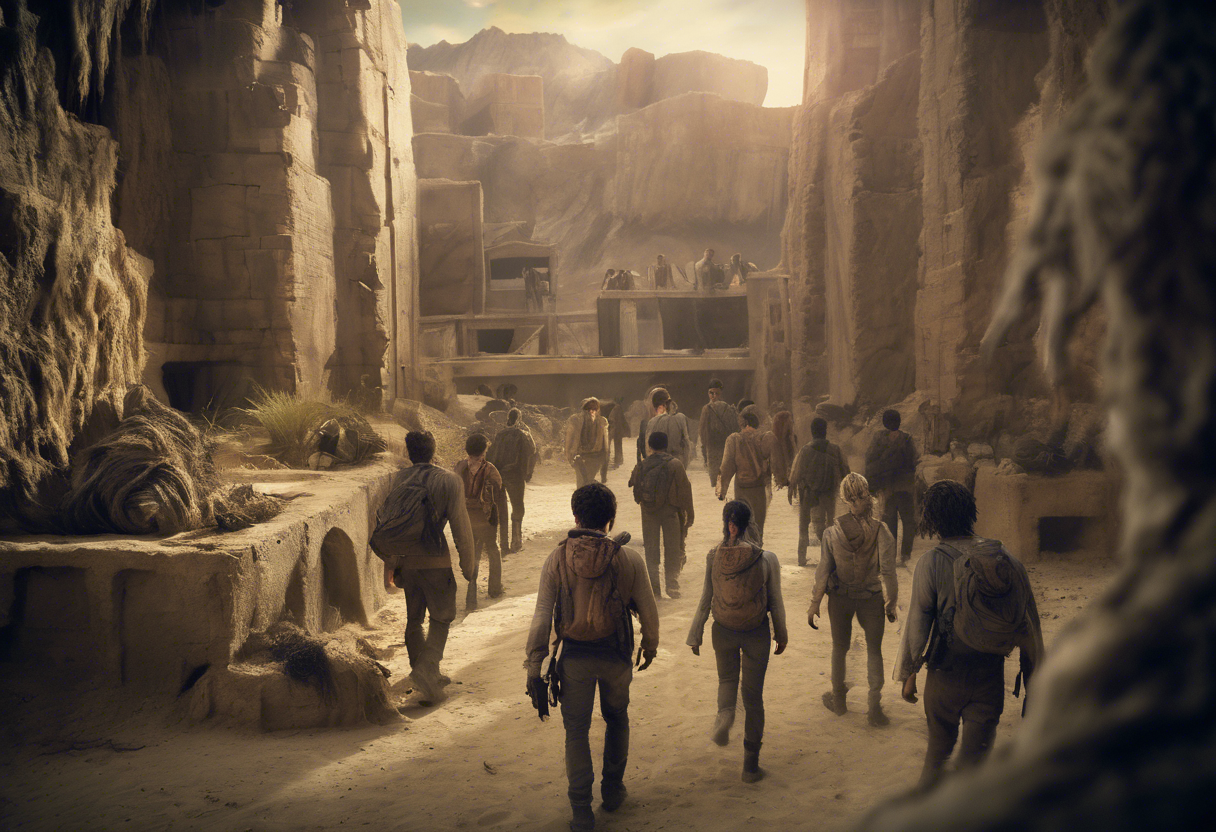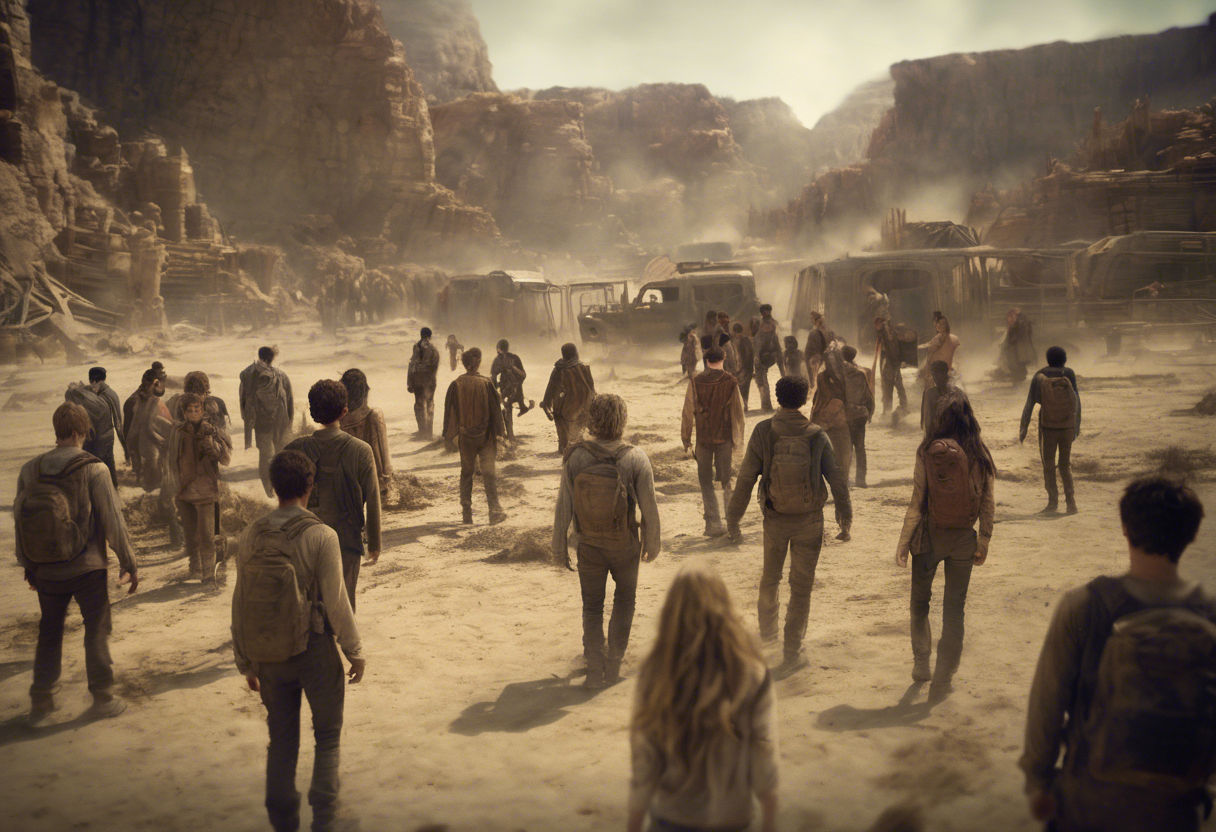Contents
Maze Runner: The Scorch Trials
Introduction
Maze Runner: The Scorch Trials, released in 2015, is the second installment in the Maze Runner film series, based on the novel of the same name by James Dashner. The film is a direct sequel to the 2014 film The Maze Runner and continues the dystopian science fiction narrative that captivated audiences worldwide. Directed by Wes Ball and written by T.S. Nowlin, the movie expands on the universe introduced in the first film, delving deeper into the post-apocalyptic world and the mysteries surrounding the characters.
The production of The Scorch Trials began in October 2014 in Albuquerque, New Mexico, and concluded in January 2015. The film features a returning cast, including Dylan O’Brien as Thomas, Ki Hong Lee as Minho, Thomas Brodie-Sangster as Newt, and Kaya Scodelario as Teresa, along with new additions such as Giancarlo Esposito, Aidan Gillen, and Barry Pepper. The movie was released in select international territories starting September 9, 2015, and in the United States on September 18, 2015, in 2D and premium large-format theaters by 20th Century Fox.
What sets The Scorch Trials apart within its genre is its intense action sequences, intricate plot twists, and the expansion of the dystopian world introduced in the first film. The movie navigates the themes of survival, trust, and identity in a world ravaged by a deadly virus and controlled by a mysterious organization.
Plot Summary
The plot of Maze Runner: The Scorch Trials picks up immediately after the events of the first film. Thomas and his fellow Gladers, including Newt, Minho, Teresa, Frypan, and Winston, are rescued from the Maze and taken to a facility run by Mr. Janson. This facility, presented as a safe haven, protects them from the Cranks—aggressive, zombie-like humans infected by the Flare virus—and provides them with food and shelter. However, Thomas soon suspects that something is amiss and, with the help of Aris, a survivor from another Maze, discovers that Janson is working with WCKD (World Catastrophe Killzone Department) and that their leader, Ava Paige, is still alive.
As Thomas and the Gladers uncover the truth, they learn that WCKD is still experimenting on them to find a cure for the Flare virus and are searching for the Right Arm resistance group in the mountains. The group decides to escape the facility and venture into the Scorch, a desolate and dangerous landscape filled with Cranks and other obstacles.
Their journey is marked by intense battles with Cranks, the loss of Winston who becomes infected and chooses to end his life to avoid becoming a Crank, and encounters with other survivors, including Brenda and Jorge. The group faces numerous challenges, including a severe thunderstorm and an attack by Janson’s team, which leads to the destruction of a safe house they had found.
As they navigate the Scorch, Thomas and his friends eventually find the Right Arm, a resistance group fighting against WCKD. However, their respite is short-lived as Teresa, who has been acting strangely, betrays them by calling WCKD, leading to a confrontation that results in the capture of several immunes. Thomas and the Right Arm manage to fend off WCKD, but the film ends with Thomas determined to infiltrate WCKD to rescue his friend Teresa and continue the fight against the oppressive organization [1][5].
Themes and Symbolism
Maze Runner: The Scorch Trials delves into several central themes that enrich its narrative and resonate deeply with audiences. One of the primary themes is survival, as the characters face constant threats from the environment, Cranks, and WCKD. This theme highlights the human instinct to survive against all odds and the moral dilemmas that come with it.
Another significant theme is trust and betrayal. The shifting alliances and betrayals among characters, particularly Teresa’s betrayal, underscore the fragility of trust in desperate circumstances. This theme adds a layer of complexity to the characters’ relationships and motivations.
The film also explores identity and memory, as Thomas and other characters grapple with their pasts and the manipulation of their memories. This theme raises questions about what is real and what is fabricated, reflecting the characters’ struggles to understand themselves and their world.
The human nature theme is also prominent, showcasing the darker aspects of human behavior under extreme stress. The Cranks, symbolizing the loss of humanity due to the Flare virus, illustrate the dehumanizing consequences of disease and desperation. The Scorch itself represents the harsh reality of the world outside the Maze, symbolizing ongoing trials and challenges [3].
Cultural Impact
Maze Runner: The Scorch Trials had a significant cultural impact upon its release. The film was a commercial success, grossing $312.3 million worldwide against a budget of $61 million. It opened at the number one spot at the box office during its opening weekend, indicating a strong following from fans of the first film and the book series.
The movie’s influence on popular culture is evident in its contribution to the dystopian genre, which has seen a surge in popularity in recent years. The film’s themes of survival, rebellion, and the fight against oppressive regimes resonate with audiences, particularly young adults who are drawn to stories of resistance and self-discovery.
The Maze Runner series, including The Scorch Trials, has also inspired various adaptations and references in other media. For example, the graphic novel prelude, The Maze Runner: The Official Graphic Novel Prelude, provides additional context about the Flare virus and the Post-Flare Coalition, expanding the series’ storyline [4].
Critical Reception
Maze Runner: The Scorch Trials received mixed reviews from critics. While some praised the film’s action sequences and performances, others criticized it for its lack of plot and character advancement. The film’s pacing and the introduction of new characters were also subjects of debate.
Despite the mixed critical reception, the film was well-received by audiences, who appreciated the continuation of the story and the expansion of the world introduced in the first film. The film’s commercial success and its ability to maintain a strong fan base indicate that it resonated with viewers on a significant level.
Over the years, the film has been reevaluated, with some critics acknowledging its strengths in world-building and its contribution to the dystopian genre. However, controversies surrounding the handling of certain characters and plot points continue to be discussed among fans and critics alike [5].
Legacy
Maze Runner: The Scorch Trials has left a lasting legacy in the world of science fiction and dystopian cinema. The film’s intense action sequences, coupled with its deep exploration of themes such as survival, trust, and identity, have inspired filmmakers and writers.
The Maze Runner series as a whole has become a staple in the young adult dystopian genre, influencing other works in the same category. The series’ ability to balance action, suspense, and emotional depth has set a high standard for subsequent films and books in the genre.
The enduring relevance of The Scorch Trials lies in its ability to engage audiences with its complex characters, intricate plot, and the ongoing struggle against an oppressive regime. As a part of cinematic history, it stands as a significant entry in the dystopian science fiction genre, continuing to inspire and captivate audiences.
References
- https://timesofindia.indiatimes.com/maze-runner-the-scorch-trials-plot-summary/articleshow/49103923.cms
- https://en.wikipedia.org/wiki/The_Scorch_Trials
- https://litdevices.com/literature/scorch-trials/
- https://screenrant.com/maze-runner-4-answer-question-flare-virus-origin/
- https://en.wikipedia.org/wiki/Maze_Runner:_The_Scorch_Trials

